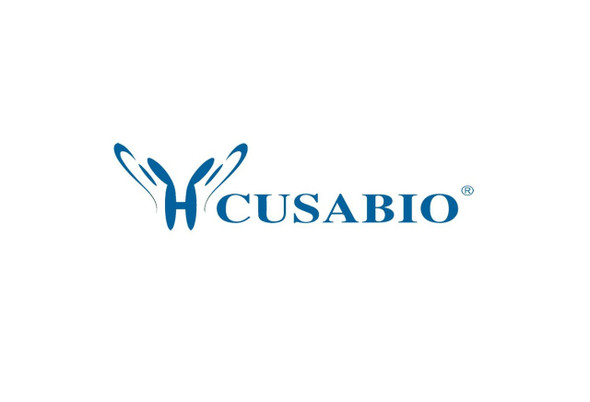Cusabio Virus & Bacteria Recombinants
Recombinant Rotavirus X Outer capsid protein VP4, partial | CSB-EP434929RIR
- SKU:
- CSB-EP434929RIR
- Availability:
- 13 - 23 Working Days
Description
Recombinant Rotavirus X Outer capsid protein VP4, partial | CSB-EP434929RIR | Cusabio
Alternative Name(s): Hemagglutinin
Gene Names: N/A
Research Areas: Others
Organism: Rotavirus X (isolate RVX/Human/Bangladesh/NADRV-B219/2002/GXP[X]) (RV ADRV-N) (Rotavirus (isolate novel adult diarrhea rotavirus-B219))
AA Sequence: MSLRSLLITTEAVGETTQTSDHQTSFSTRTYNEINDRPSLRVEKDGEKAYCFKNLDPVRYDTRMGEYPFDYGGQSTENNQLQFDLFTKDLMADTDIGLSDDVRDDLKRQIKEYYQQGYRAIFLIRPQNQEQQYIASYSSTNLNFTSQLSVGVNLSVLNKIQENKLHIYSTQPHIPSVGCEMITKIFRTDVDNENSLINYSVPVTVTISVTKATFEDTFVWNQNNDYPNMNYKDLIPAVTKNSIYHDVKR
Source: E.coli
Tag Info: N-terminal 10xHis-tagged and C-terminal Myc-tagged
Expression Region: 1-249aa
Sequence Info: Partial
MW: 33.8 kDa
Purity: Greater than 85% as determined by SDS-PAGE.
Relevance: Outer capsid protein VP4: Spike-forming protein that mediates virion attachment to the host epithelial cell receptors and plays a major role in cell penetration, determination of host range restriction and virulence. Rotavirus attachment and entry into the host cell probably involves multiple sequential contacts between the outer capsid proteins VP4 and VP7, and the cell receptors. It is subsequently lost, together with VP7, following virus entry into the host cell. Following entry into the host cell, low intracellular or intravesicular Ca2+ concentration probably causes the calcium-stabilized VP7 trimers to dissociate from the virion. This step is probably necessary for the membrane-disrupting entry step and the release of VP4, which is locked onto the virion by VP7.Outer capsid protein VP5*: Forms the spike "foot" and "body" and acts as a membrane permeabilization protein that mediates release of viral particles from endosomal compartments into the cytoplasm. During entry, the part of VP5* that protrudes from the virus folds back on itself and reorganizes from a local dimer to a trimer. This reorganization may be linked to membrane penetration.Outer capsid protein VP8*: Forms the head of the spikes and mediates the recognition of specific host cell surface glycans. It is the viral hemagglutinin and an important target of neutralizing antibodies.
Reference: "Whole genomic characterization of a human rotavirus strain B219 belonging to a novel group of the genus Rotavirus." Nagashima S., Kobayashi N., Ishino M., Alam M.M., Ahmed M.U., Paul S.K., Ganesh B., Chawla-Sarkar M., Krishnan T., Naik T.N., Wang Y.-H. J. Med. Virol. 80:2023-2033(2008)
Storage: The shelf life is related to many factors, storage state, buffer ingredients, storage temperature and the stability of the protein itself. Generally, the shelf life of liquid form is 6 months at -20?/-80?. The shelf life of lyophilized form is 12 months at -20?/-80?.
Notes: Repeated freezing and thawing is not recommended. Store working aliquots at 4? for up to one week.
Function:
Involvement in disease:
Subcellular Location:
Protein Families:
Tissue Specificity:
Paythway:
Form: Liquid or Lyophilized powder
Buffer: If the delivery form is liquid, the default storage buffer is Tris/PBS-based buffer, 5%-50% glycerol. If the delivery form is lyophilized powder, the buffer before lyophilization is Tris/PBS-based buffer, 6% Trehalose, pH 8.0.
Reconstitution: We recommend that this vial be briefly centrifuged prior to opening to bring the contents to the bottom. Please reconstitute protein in deionized sterile water to a concentration of 0.1-1.0 mg/mL.We recommend to add 5-50% of glycerol (final concentration) and aliquot for long-term storage at -20?/-80?. Our default final concentration of glycerol is 50%. Customers could use it as reference.
Uniprot ID: A9Q1L0
HGNC Database Link: N/A
UniGene Database Link: N/A
KEGG Database Link: N/A
STRING Database Link: N/A
OMIM Database Link: N/A






